Earlier last month, in a recent article for CNBC, Research Director at Indeed’s Hiring Lab Nick Bunker noted that this year’s labour market is “getting closer to a marathon pace” in relation to last year’s “sprinting” pace. And, crucially, this slowdown is “welcome,” Bunker notes; “it’s the only way to go the distance.” Still, employers and job seekers alike need to proceed with care when looking to secure worthy candidates and job positions respectively. Employers in particular must remain agile and competitive to ensure they continue to attract the best candidates. The best way to do so, it seems, is to have a game-plan that you and your team can adjust as time goes on and changes happen internally and externally. Specifically, many professionals are recommending what is called a recruitment roadmap to make sure recruiters and those looking to remain competitive in their industry remain competitive.
So, what is this roadmap, and what does it require? Read on to find out and to discover how your roadmap can help you maintain your competitive edge.
What Is a Recruitment Roadmap?
A recruitment roadmap—also called a hiring roadmap or recruitment plan—is a step-by-step plan for a hiring cycle. It unites recruiters, hiring managers, and other organization stakeholders together in the hiring cycle to make sure all members are on the same page when it comes to filling open positions within the company. The recruitment roadmap usually includes the following for each job position for which a company is hiring:
- the job position description
- the recruitment budget
- a timeline for hiring
- sourcing strategies
- a list of interviewers
- plans for diversity and inclusion
- the job offer details
Of course, by no means is this list exhaustive. Your recruitment roadmap should include any and all details that are pertinent to the position for which you are hiring. This way, all involved in the hiring cycle will remain informed and on the same page with your organization’s requirements.
Create a Recruitment Roadmap with These 5 Simple Steps
It should go without saying that each available position for which you want to hire will require a reassessment to determine if anything has changed internally or externally before acting upon it. Each cycle, however, will require the following steps.
1. Identifying Numerous Useful Channels for Talent Acquisition
Each recruitment roadmap, as Recruiter.com suggests, starts with identifying the channels through which you will acquire your talent. And crucially, you should identify numerous channels to do so. This way, you can increase the likelihood of finding top talent in your industry. However, setting a wide net is not the same as setting multiple nets in peak areas.
So, make sure for each position you’re hiring for you’re carefully considering where your top talent will be searching for positions. Consider online job boards, social media platforms, career fairs at universities and colleges, and employee referrals. And with each channel, consider the likelihood of your top performer finding your posting there.
2. Expanding Your Reach with References and External Contacts
In addition to considering the channels through which you can acquire top talent, consider adding any external contacts and references you might be able to employ in each recruitment roadmap. Consider who might be a good source for a referral for this particular position and the likelihood that a referral from such a contact might turn into a long-term employee.
You can even incentivize these references to further build connections between external contacts and referees—talk about a win-win situation!
3. Writing Job Postings That Will Attract the Right Candidates
We’ve emphasized the importance of writing a compelling and relevant job description in many blog posts before, but crucially, a roadmap requires a team to share this information across its team members and recruiters. This way, everyone is in the know about exactly what the organization is looking for in an ideal candidate.
And of course, the more eyes on the job posting, the more likely you are to receive feedback on it. This can help with ensuring your language in the job posting is accessible, inclusive, and emphasizes the company’s values. It can also ensure you’re using the right keywords that will ensure the role will appear to those looking for positions based on industry- and position-specific keywords. So, make sure to collaborate and agree upon the specific language choices you make in your job postings as a unit.
4. Determining Gaps in Current Workforce
To build a recruitment roadmap by determining gaps in the current workforce, employers should start by conducting a thorough workforce analysis. This involves assessing the skills, experience, and qualifications of their existing employees and comparing them to the organization’s current and future needs.
Identifying specific gaps in the workforce, such as shortages in critical skill sets or leadership positions, is crucial. Once these gaps are clearly defined, the roadmap can be tailored to address them by outlining recruitment strategies, training and development programs, or internal promotions.
5. Proactively Enacting Diversity and Inclusion Practices
Employers can build a recruitment roadmap that proactively enacts diversity and inclusion practices by incorporating these principles into every stage of the hiring process. It begins with crafting inclusive job descriptions that emphasize qualifications and skills over specific demographics.
The roadmap should also include outreach to diverse talent pools, actively seeking candidates from underrepresented backgrounds. During interviews and evaluations, standardized criteria should be used to minimize bias, and interview panels should be diverse to ensure a fair assessment. Employers should provide diversity and inclusion training for all hiring stakeholders.
Additionally, tracking and analyzing diversity-related metrics within the recruitment process can help identify areas for improvement. A commitment to diversity and inclusion should be communicated to candidates and consistently reinforced in the workplace, creating a more equitable and welcoming environment for all employees.







